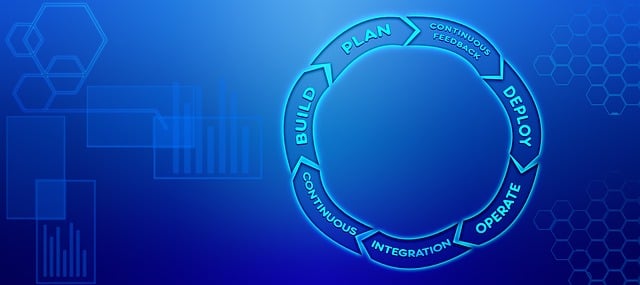The 5S Framework, rooted in Japanese lean management, transforms cluttered workspaces into efficient environments through sorting, ordering, cleaning, standardizing, and sustaining. By embracing minimalism, functionality, and process standardization, businesses achieve increased productivity, reduced waste, improved safety, and a culture of optimal efficiency across various industries and departments via continuous improvement methods like 5S training and lean management practices.
In today’s fast-paced work environment, efficient time management is key to success. This article explores powerful strategies for implementing a robust time management system, leveraging essential concepts like the 5S Framework and Lean Management Principles. By understanding how these methodologies enhance workplace organization, you can integrate them into your workflow, fostering process standardization and continuous improvement. Discover how measuring success through progress tracking ensures long-term growth, making your team more productive and agile.
- Understanding the 5S Framework for Efficient Workplace Organization
- Integrating Lean Management Principles into Time Management Systems
- Standardizing Processes: The Key to Continuous Improvement
- Measuring Success: Tracking Progress and Ensuring Long-Term Growth
Understanding the 5S Framework for Efficient Workplace Organization

The 5S Framework is a powerful tool for transforming cluttered and chaotic workspaces into efficient, well-organized environments. This lean management principle, rooted in Japanese production methods, emphasizes sorting, setting in order, shining (cleaning), standardizing, and sustaining. Each ‘S’ represents a critical step in the process of workplace organization and continuous improvement.
5S training involves teaching employees these principles to create a culture that values minimalism, functionality, and ongoing process standardization. By implementing 5S, businesses can achieve significant improvements in productivity, reduce waste, enhance safety, and foster an atmosphere where every item has its place and purpose. This method is applicable across various industries and departments, ensuring a streamlined workflow and optimal efficiency.
Integrating Lean Management Principles into Time Management Systems

Integrating Lean Management principles into time management systems can significantly enhance productivity and efficiency. Lean Management focuses on eliminating waste and streamlining processes, which aligns perfectly with effective time management. By adopting practices like 5S training—a method involving sorting, setting in order, shining (cleaning), standardizing, and sustaining—workplaces can achieve better organization and workplace efficiency. This approach ensures that tasks are performed in a logical and organized manner, reducing time-wasting activities.
The 5S continuous improvement methodology encourages regular assessments and standardization of work processes. This means creating standardized procedures for common tasks, ensuring everyone follows the same efficient steps. Such process standardization minimizes variations in how tasks are executed, leading to more consistent outcomes. By integrating these lean principles, time management systems become dynamic tools that not only help allocate time effectively but also foster a culture of continuous improvement within the organization.
Standardizing Processes: The Key to Continuous Improvement

Standardizing processes is a cornerstone of any successful time management system, and it’s where 5S training and lean management excel. By implementing the principles of 5S—Sort, Set in Order, Shine (Clean), Standardize, and Sustain—organizations can achieve unparalleled workplace organization. This method encourages employees to only keep what’s necessary, arrange tools and equipment efficiently, maintain a clean and safe environment, establish standardized work procedures, and continuously improve these processes over time.
Process standardization, a key aspect of 5S continuous improvement, leads to more predictable outcomes, reduces waste, minimizes errors, and boosts overall productivity. It ensures that tasks are performed consistently, allowing teams to focus on their core responsibilities. Standardized processes also make it easier to train new employees, transfer knowledge, and ensure quality across the board, fostering a culture of excellence and continuous enhancement in the workplace.
Measuring Success: Tracking Progress and Ensuring Long-Term Growth

Measuring success is a critical aspect of any time management system. By implementing 5S training and lean management principles, organizations can effectively track progress and ensure long-term growth. The 5S methodology—Sort, Set in Order, Shine, Standardize, Sustain—is a powerful tool for workplace organization and continuous improvement. It promotes process standardization, enabling employees to quickly identify and eliminate waste, enhancing efficiency across the board.
Regular tracking of key performance indicators (KPIs) is essential in this process. Organizations should set measurable goals aligned with their overall objectives, using data-driven insights to gauge progress. This includes evaluating not just immediate outcomes but also the long-term impact of implemented strategies. By fostering a culture of continuous improvement, where 5S practices are integrated into daily operations, companies can sustain productivity gains and maintain a competitive edge in their industry.
By implementing the 5S framework, integrating lean management principles, standardizing processes, and diligently measuring success, organizations can significantly enhance their time management systems. These strategies collectively promote a disciplined, efficient, and continuously improving workplace environment. Through proper training in 5S techniques and fostering a culture of lean thinking, teams can optimize productivity, reduce waste, and achieve long-term growth. Process standardization ensures consistency, allowing for better tracking of progress and informed decision-making. Embracing these practices is a proven path to unlocking the full potential of any workforce.
